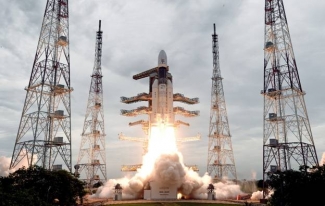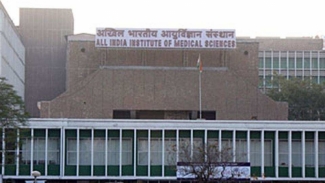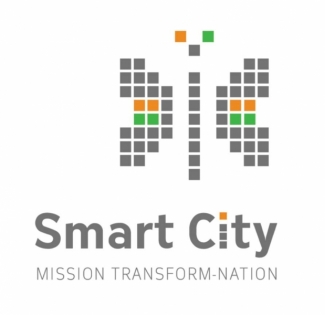

India’s Geosynchronous Satellite Launch Vehicle GSLV MkIII-M1, successfully launched the 3840 kg Chandrayaan-2 spacecraft into an earth orbit today. The spacecraft is now revolving round the earth with a perigee (nearest point to Earth) of 169.7 km and an apogee (farthest point to Earth) of 45,475 km. Today’s flight marks the first operational flight of the GSLV Mk III.
After a smooth countdown lasting 20 hours, GSLV MkIII-M1 vehicle majestically lifted off from the Second Launch Pad at the Satish Dhawan Space Centre SHAR (SDSC SHAR), Sriharikota in Andhra Pradesh at the scheduled launch time of 1443 Hrs (2:43 pm) Indian Standard Time (IST) with the ignition of its two S200 solid strap-on motors. All the subsequent flight events occurred as scheduled.
About 16 minutes 14 seconds after lift-off, the vehicle injected Chandrayaan-2 spacecraft into an elliptical earth orbit. Immediately after spacecraft separation from the vehicle, the solar array of the spacecraft automatically got deployed and ISRO Telemetry, Tracking and Command Network (ISTRAC), Bengaluru successfully took control of the spacecraft.
About 16 minutes 14 seconds after lift-off, the vehicle injected Chandrayaan-2 spacecraft into an elliptical earth orbit. Immediately after spacecraft separation from the vehicle, the solar array of the spacecraft automatically got deployed and ISRO Telemetry, Tracking and Command Network (ISTRAC), Bengaluru successfully took control of the spacecraft.
ISRO Chairman Dr K Sivan congratulated the launch vehicle and satellite teams involved in this challenging mission. “Today is a historical day for Space Science and Technology in India. I am extremely happy to announce that GSLV MkIII-M1 successfully injected Chandrayaan-2 into an orbit of 6000 Km more than the intended orbit and is better.”
Prime Minister Narendra Modi’s message had this to say:
“Special moments that will be etched in the annals of our glorious history! The launch of Chandrayaan 2 illustrates the prowess of our scientists and the determination of 130 crore Indians to scale new frontiers of science. Every Indian is immensely proud today!
Indian at heart, Indian in spirit! What would make every Indian overjoyed is the fact that Chandrayaan 2 is a fully indigenous mission. It will have an Orbiter for remote sensing the Moon and also a Lander-Rover module for analysis of lunar surface.
Chandrayaan 2 is unique because it will explore and perform studies on the south pole region of lunar terrain which is not explored and sampled by any past mission. This mission will offer new knowledge about the Moon.
Efforts such as Chandrayaan 2 will further encourage our bright youngsters towards science, top quality research and innovation. Thanks to Chandrayaan, India’s Lunar Programme will get a substantial boost. Our existing knowledge of the Moon will be significantly enhanced.”











